Behind the Scenes on “Ratatouille”
By Leo N. Holzer
Special to The Blue Parrot
A trip to Paris, fine-dining, cooking lessons, even taking on rats as pets — it’s simply been part of the job for members of Pixar Animation Studios’ creative team.
“It’s all research,” said Mark Andrews, story supervisor for “Ratatouille,” Pixar’s new animated comedy by director Brad Bird.
In the film, a rat named Remy — who isn’t satisfied with the garbage his clan eats — teams with a down-and-out garbage boy, Linguini, to become one of the great chefs of Paris.
“With Google, we could look at shots of Paris until our eyes bleed, but you don’t get a sense of the true light there,” Andrews said. “You don’t get a sense of the people, the smells, details like what does the sewer grate look like and how much stuff there is on the sidewalk. You could only get those details by going to these places.”
So Pixar sent Andrews, Bird and a few other key members of the production team on a six-day trip to France.
“It was fun, but not in a recreational sense. We didn’t have a whole lot of time to just hang out,” Andrews said. “It was very structured. You’re really trying to put on your observer’s hat because what you retain goes back into the movie.”

The trip included a motorcycle tour of Paris, visits to the city’s sewer system and an exterminator’s shop, as well as a few gut-busting gourmet meals. It also became a shared experience for the director and his story supervisor — and aided the creative process of making a great movie.
“Brad would go ‘you know this part where Linguini is going to kill Remy. We need someplace really moody and we need to get out into Paris,’ ” Andrews said, recalling a collaborative story session. “I’m like ‘what if we do it down by the Seine. Remember there was this bridge that we rode under during our motorcycle tour. And remember how the mist came off the river.’ And Brad was like, ‘yeah, yeah, yeah! Let’s put it there.’
“We could pick locations because we had been there,” Andrews said.

Research for “Ratatouille” continued inside Pixar’s Emeryville studios with live rats and cooking lessons for the nine members of Andrews’ storyboarding team and many of the film’s animators.
“To really observe how rats move, you got to be with them 24/7,” Andrews said. “To know how to chop correctly or put stuff in a bowl correctly, or prep your food correctly, you have to learn how to do it.”
The genesis of “Ratatouille” was cooked up in the mind of Jan Pinkava, director of the Oscar-winning Pixar short “Geri’s Game.”
While most everyone liked Pinkava’s wildly inventive idea of this plucky little rat who aspires to be a great chef, Bird was brought on board to spice up a story that wasn’t quite working. Unfortunately, the clock was ticking and Bird was facing a tight 18-month deadline. The preferred production schedule for an animated film is three years.
One of the things Bird had to do in taking over “Ratatouille” was to make it his movie, Andrews said.
“(Pinkava) had got ‘Ratatouille’ up to this point where we had all these assets,” he said. “We had sets, we had characters, we had all this stuff, so that helped greatly. But we didn’t have a lot of time. We had to get the story to Brad and get it working solid.”
It was a bit of a struggle at first. But after enjoying a break for the Christmas holiday, Andrews said both he and Bird came back inspired.
“Brad says, ‘I have some radical ideas,’ and I say, ‘I’ve got a radical idea,’ ” Andrews said. “I tell him mine and he’s like, ‘that’s perfect.’ And then he tells me his and I’m saying, ‘that’s fantastic.’
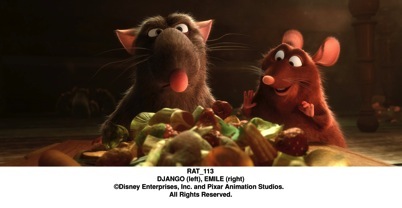
“(Bird) cut out most of the rat family. Remy had more brothers, sisters, a mother, an uncle. There was like eight storylines. We cut it down to one: It’s Remy’s story.”
“I killed off the rat family when they go down the sewer drain and Remy gets separated. That was my radical idea — get the rats out of the picture and then bring them back at the most inopportune time. It put the focus on Remy and worked out great.”
“Then Brad killed Gusteau (a chef Remy idolized who believed that anyone can cook). Gusteau’s dead; he’s a figment of Remy’s imagination.”
The plot and the structure were basically the same, but the whole story sort of transformed.
“All the sudden it was Brad’s movie,” Andrews said. “That light turned on in his eye and now we only have 12 months to make it.”
Throughout the story-crafting process, Andrews said, Bird stressed the “believability of the situation.”
“It doesn’t have to be logical because there’s no way a rat is going to pull your hair and make you do things. There’s no way a rat is going to cook,” Andrews explained. “But you can believe if somebody was as sensitive as Linguini, you can pull that off. So there were those scenes where we had to see a kind of progression of that idea.
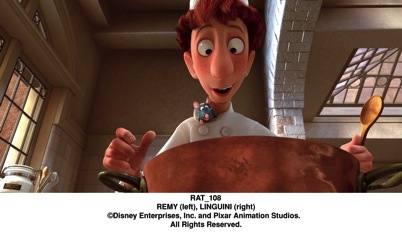
“Out of all that comes this fantastic physical comedy that just happened naturally in the course of the story — it was just there,” he continued.
Believability was also key to the story’s twists and turns, especially in its wildly entertaining third act.
“We got up to the ending and were wondering now how in the heck are we going to reveal this rat and have anybody buy it — and nobody would unless you take them through the process. Unless you take the time to explain it to them.”
Andrews also credited Bird for looking past conventional storytelling and audience expectations of how things might end.
“Brad can just see that little gem of an idea that’s not necessarily the standard kind of thing. He’ll see this gem as character and as something that’s going to be entertaining. What the audience is really going to get invested in, what they’re really going to fall in love with is this character,” Andrews said. “All the twists and turns in the plot are finding those characters’ motivations and running with them.”
The changes made by Bird and his story team inspired their colleagues at Pixar.
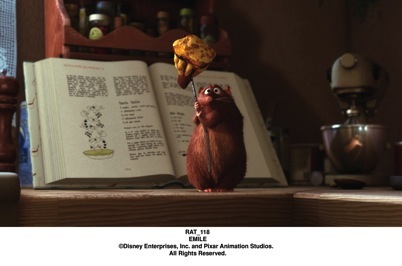
“Nine months later the story was done, 90 percent of the sequences were approved, half of it was already animated and we were flying,” Andrews said. “Everybody was on board and bringing their all.
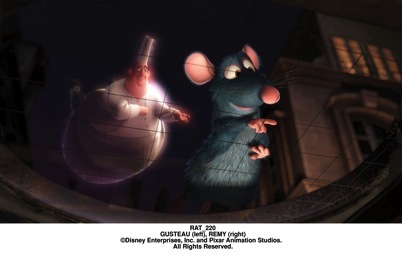
“When you’re working on a movie that’s basically about an artist shining, you can’t help but get caught up in that and want to shine, too. Especially when it’s an impossible thing to do.
“I mean having a rat cook is an impossible, impossible idea. And getting this film done in the amount of time we had is impossible. It’s no way to make a movie if we had a choice. But everybody rose to the occasion and did their best, best work.”
For behind-the-scenes video highlights of Pixar’s latest production, “Ratatouille,” visit www.thereporter.com. Leo N. Holzer can be reached at leoholzer@go.com.

Mousellaneous Extra
Friday, June 29, 2007
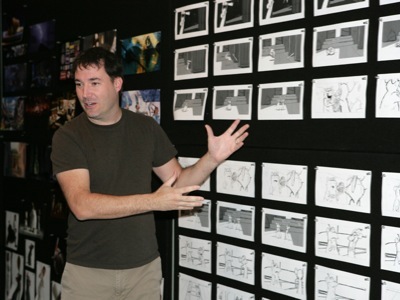
Mark Andrews talks about some of the storyboards his team of nine artists created for Pixar's latest release, "Ratatouille." Photo by Deborah Coleman/Pixar.
